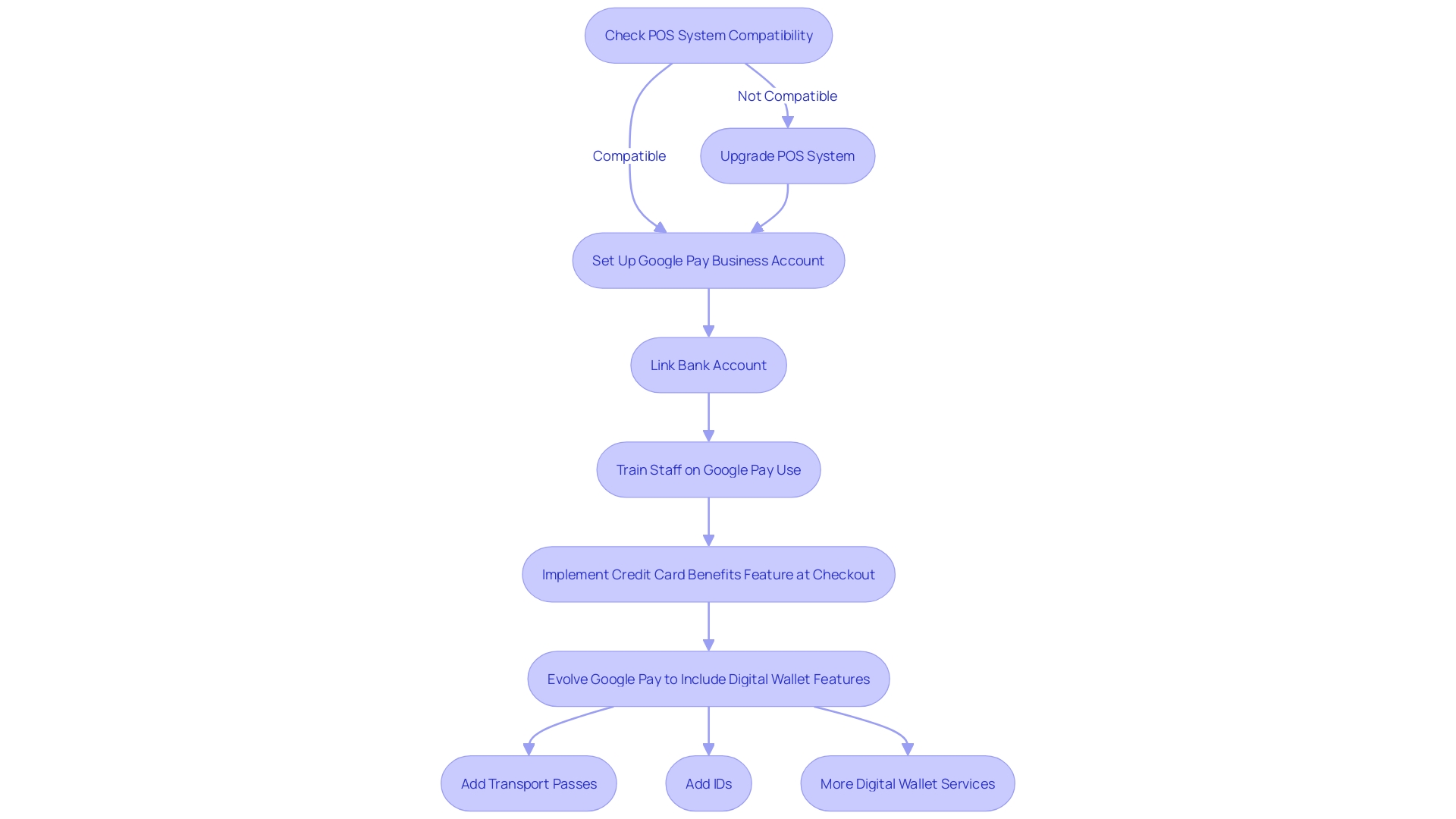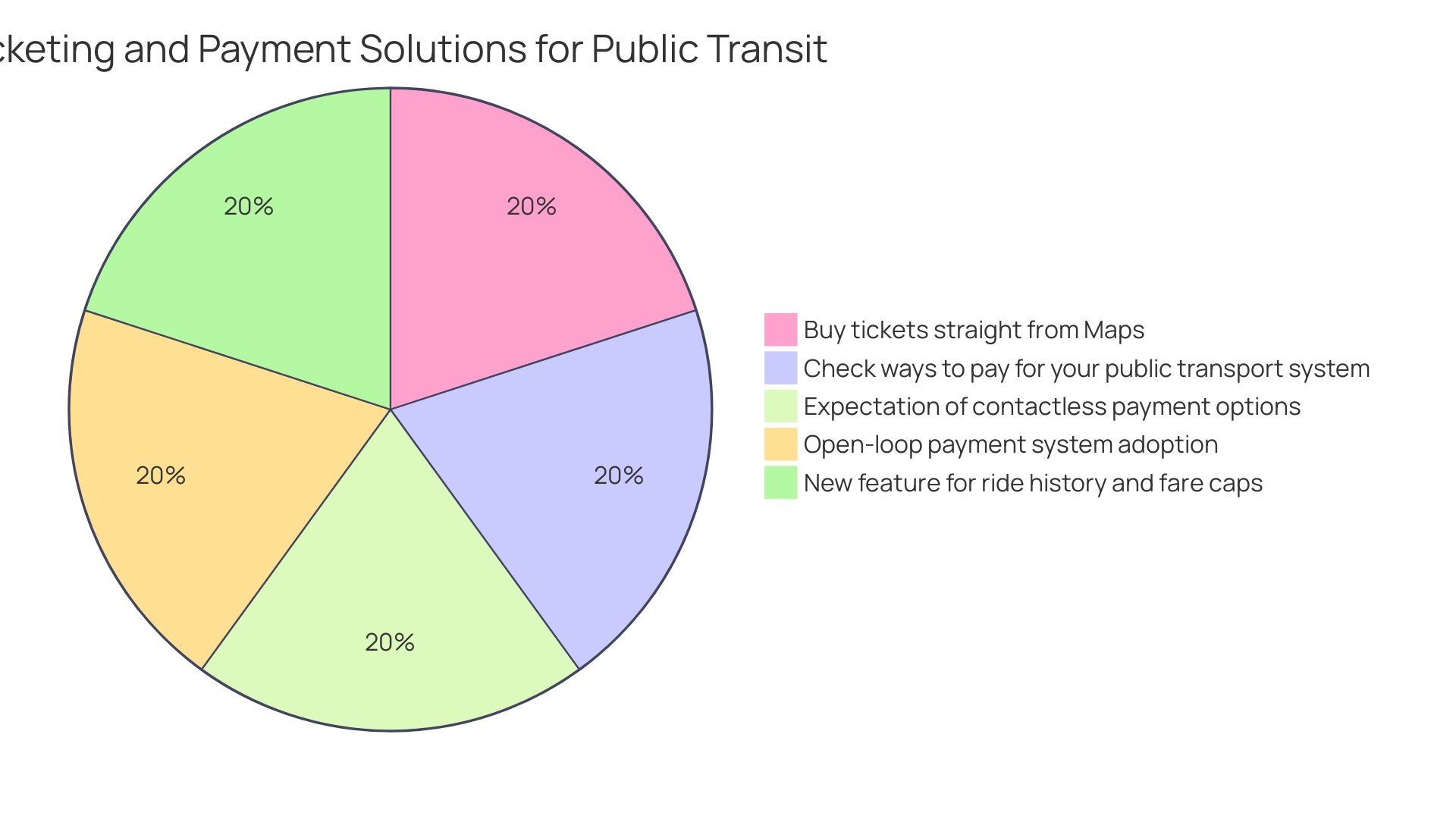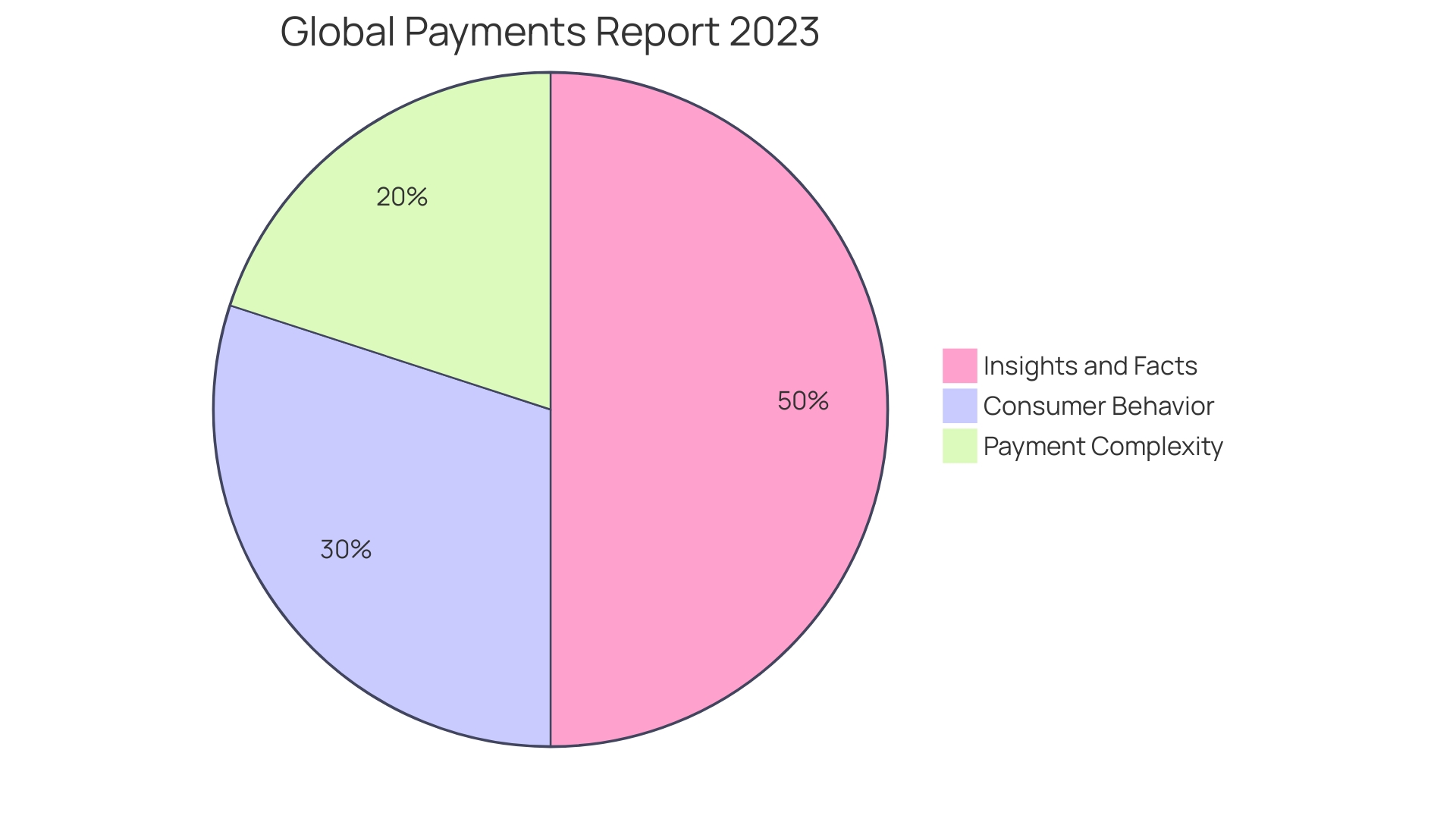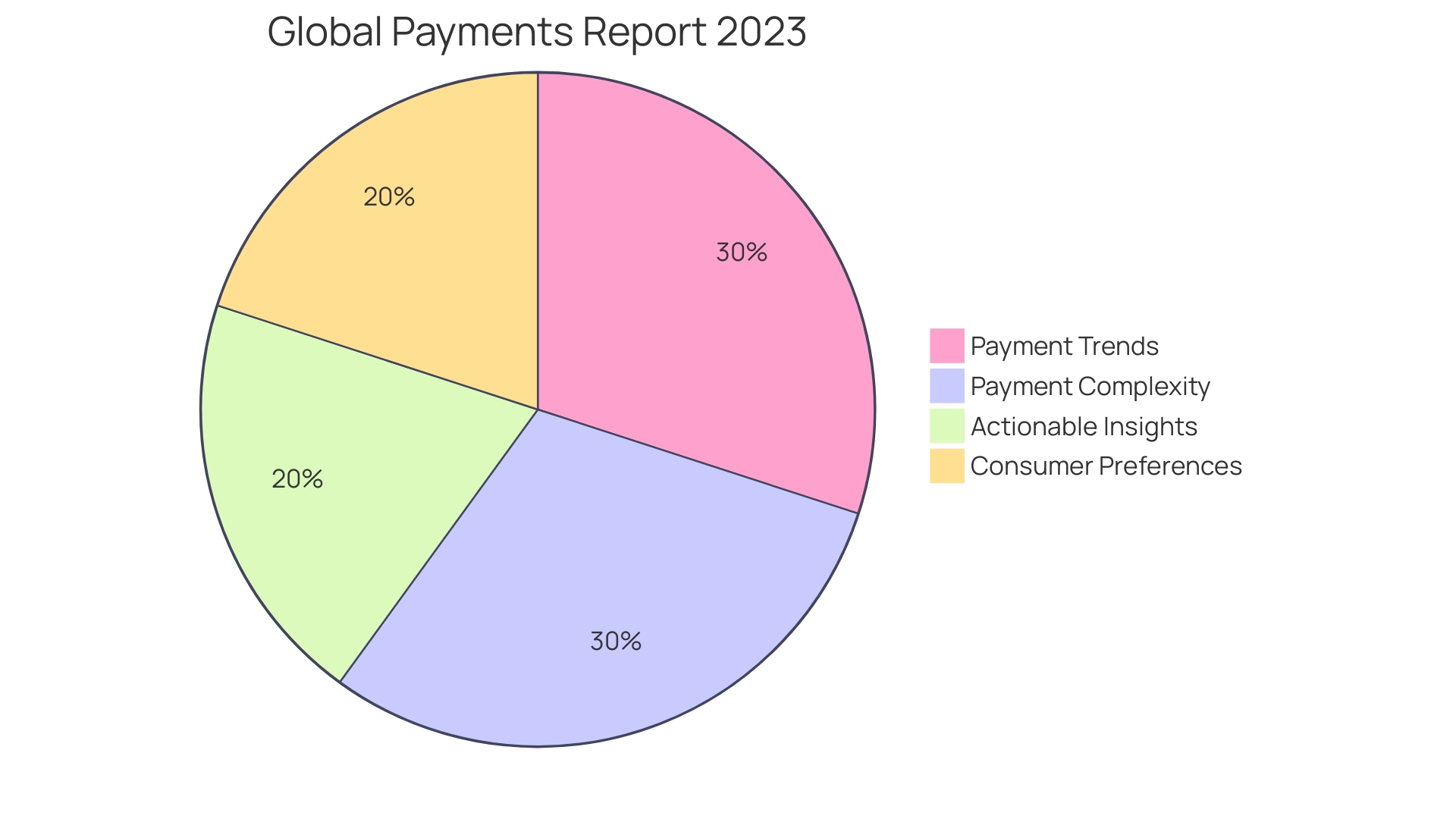Introduction
Google Pay has transformed the way customers engage with merchants, offering convenience and security in a digital wallet. This article explores the operational mechanics of Google Pay and highlights its value for businesses. By embracing Google Pay, merchants can provide a frictionless checkout experience, tap into a tech-savvy market, and enhance customer loyalty.
The article also emphasizes the importance of understanding the evolving digital payment landscape and the need for secure payment solutions. With its robust security measures and integration with Google products, Google Pay ensures transactions are protected and offers a personalized and advanced payment experience. Additionally, the article discusses the integration process for in-store and online payments, the benefits of Google Pay for businesses, and alternative payment solutions.
It also covers the security features and compliance of Google Pay, the costs and fees associated with it, common issues, troubleshooting, and best practices for implementing Google Pay. By following these recommendations, businesses can optimize the payment experience and stay ahead in the competitive e-commerce space.
How Google Pay Works
Google Pay has revolutionized the way customers interact with merchants, offering a blend of convenience and security that aligns with the demands of modern consumers. This digital wallet allows shoppers to effortlessly use their smartphones for transactions, eliminating the need for physical cards or cash. For businesses, embracing Google Pay means tapping into a growing market of tech-savvy users who prioritize ease and rapidity in their purchasing journey.
With its integration, merchants can facilitate a frictionless checkout experience, fostering customer loyalty and potentially increasing sales. It's important for businesses to understand the operational mechanics of Google Pay to fully leverage its benefits. This includes recognizing the value of features like loyalty programs and rewards, which can enhance the appeal of digital wallets to consumers.
The digital payment landscape is continuously evolving, underscored by the Global Payments Report 2023, which emphasizes the swift changes in consumer payment preferences and the rise of alternative payment methods. As businesses look to stay ahead in the competitive e-commerce space, adopting versatile payment solutions like Google Pay is not just an option but a necessity.
Moreover, the security aspect of Google Pay cannot be overstated. McKinsey's Digital Payments Consumer Survey reveals that 69% of consumers rank security and trust as their primary considerations when choosing a digital wallet, and Google Pay is designed with these concerns in mind. It incorporates robust security measures akin to those safeguarding Google Accounts, ensuring that transactions are protected with the latest technology.
In light of recent announcements, it's worth noting that while the Google Pay app will be discontinued from June 4, 2024, in select countries, its services, particularly in regions like India, will remain active. Businesses must stay informed about such changes to manage their payment strategies effectively.
For merchants looking to expand their digital payment options, integrating Google Pay is a strategic move that aligns with global trends and consumer expectations, offering a seamless payment infrastructure that resonates with a digitally-connected clientele.
Benefits of Accepting Google Pay for Businesses
Integrating Google Pay into your business's payment options can significantly enhance the shopping experience for your customers. This modern payment solution caters to the growing segment of consumers who prefer the convenience and security of digital wallets. With features like tokenization and encryption, Google Pay safeguards transactions, fostering a trustworthy environment for both customers and merchants. Moreover, recent developments such as the liability shift for Visa device tokens with Google Pay in the European region further protect merchants by transferring the responsibility for fraudulent transaction losses to the issuing bank. This move exemplifies the ongoing advancements in digital payment security and the commitment to reducing merchant risks.
The adoption of mobile payment platforms like Google Pay is not just about convenience; it's also about remaining competitive in an increasingly digital marketplace. Chess.com, a global online chess platform with over 150 million users, leverages technology to unite players worldwide and enhance their gaming experience. Their IT infrastructure, which includes integration with services like Google Cloud Platform, demonstrates the importance of scalable and secure digital solutions for customer engagement and satisfaction. Similarly, merchants can utilize Google Pay to attract a tech-forward clientele and streamline their payment processes.
Recent updates to Google Wallet, such as the addition of workplace ID card support, signify the expanding functionality of digital wallets. Alongside contactless public transit payments and the display of credit card benefits at checkout, Google is continuously innovating to meet the needs of modern consumers. With nine out of ten public transit riders expecting contactless payment options and cities worldwide adopting open-loop payment systems, the trend towards digital payment solutions is clear. By integrating Google Pay, merchants can offer their customers a seamless and advanced payment experience, keeping pace with evolving consumer preferences and technological advancements.
Setting Up Google Pay for In-Store Payments
Embracing Google Pay for in-store transactions is a strategic move for merchants looking to enhance customer experience through secure and convenient payment options. The integration process is straightforward, beginning with the compatibility check of the existing POS systems to accommodate Google Pay. Once confirmed, the next step involves setting up a Google Pay business account and linking it to the merchant's bank account.
Training staff is crucial to ensure a smooth adoption of Google Pay. Employees need to be familiar with processing these payments and addressing any customer inquiries. Furthermore, merchants can leverage Google Pay's feature that showcases credit card benefits at checkout, assisting customers in making informed decisions about which card to use based on rewards or cashback options. This feature is particularly beneficial for businesses that aim to provide a personalized shopping experience.
Additionally, Google Pay's evolution reflects its capability to store not just payment methods but also transport passes, IDs, and more, signifying a move towards a comprehensive digital wallet. Understanding and utilizing these features can position merchants at the forefront of digital payment trends, providing a competitive edge in today's fast-paced market as elucidated in the Global Payments Report 2023.

Accepting Google Pay Online
Merchants have the opportunity to leverage Google Pay's growing popularity by integrating it into their online payment systems. Integrating Google Pay API into websites and apps not only simplifies the transaction process but also showcases the specific benefits of customers' credit cards at checkout. With Google Pay's latest features, users can easily discern which of the cards offer the best rewards for the purchases, whether it's for travel, dining out, or earning cash back on general purchases. This personalized insight into card benefits, available for American Express and Capital One cardholders, enhances the online shopping experience. Additionally, the Global Payments Report 2023 emphasizes the importance of staying current with payment trends and consumer preferences, highlighting the rapid evolution of the payment landscape. As the digital economy grows, services like Google Pay are crucial in bridging global financial inclusion, with a significant increase in bank account ownership among adults in developing nations. These advancements underscore the role of Google Pay in creating a more secure, convenient, and smart spending experience for online shoppers.

Integrating Google Pay with Your Website or App
Embedding Google Pay as a payment solution on your website or mobile application not only aligns with the modern consumer's demand for speed and convenience but also taps into the growing trend of integrated financial services. The integration is designed to be user-friendly, requiring developers to implement specific API calls in compliance with Google's established guidelines. By incorporating Google Pay, merchants can offer a seamless checkout process, which can lead to reduced cart abandonment rates and increased customer satisfaction. According to Tom, a FinTech industry expert, today's market is characterized by a swift move towards digital solutions that emphasize ease of use and security—qualities that Google Pay brings to the table. As highlighted by recent enhancements to the platform, users can now view their credit card benefits at the point of purchase, a feature that underscores the importance of smart spending tools and caters to the desire for a frictionless payment experience. The Global Payments Report 2023 further emphasizes the necessity for businesses to stay abreast of payment trends, suggesting that the adoption of solutions like Google Pay could be pivotal in navigating the complexities of consumer preferences and the fast-paced evolution of the payments industry.

Google Pay Integration with Payment Gateways and POS Systems
The integration of Google Pay with payment systems is a multifaceted enhancement that can have a transformative impact on a merchant's transactional capabilities. By linking Google Pay with established payment gateways and point-of-sale systems, merchants unlock the ability to process transactions through a multitude of channels, from physical storefronts to the digital realm, encompassing both web-based and mobile environments.
Recent shifts in the payment industry have emphasized the importance of a unified payment service provider (PSP) to cater to a global customer base. Taking cues from the strategic decision by companies like La Redoute in selecting Stripe as their unified PSP, merchants can appreciate the value of streamlining payment systems for efficiency and customer-centricity. This strategic move not only simplifies the payment process but also addresses integral components such as payment aliases, captures, refunds, and even fraud analysis, all centered around the consumer experience.
Moreover, with the forthcoming transition of the Google Pay app's availability, as announced by Google for June 4, 2024, merchants should note that such integrations remain pertinent and unaffected in regions like India. This reassurance from Google ensures that the core functionalities of Google Pay will still support merchants' needs without disruption.
In the context of online payments, privacy remains paramount. Google Pay's integration respects consumer preferences, offering a personalized experience without compromising security. In addition, the platform's capability to display specific card benefits during the checkout process, such as those offered by American Express and Capital One, exemplifies the convenience and smart spending tools that consumers value most, as highlighted by recent Google Pay feature updates.
The payment landscape continues to evolve rapidly, and staying abreast of these changes is crucial for merchants. The Global Payments Report 2023 suggests a growing preference for alternative payment methods and highlights the significance of understanding market-specific consumer behaviors. This knowledge is invaluable for merchants considering expansion into new markets or aiming to maintain a competitive edge in existing ones.
Security Features and Compliance
Google Pay is continually evolving to improve the security of transactions for merchants and consumers. By utilizing tokenization, Google Pay creates a unique identifier or 'token' for each transaction, which means sensitive payment details are never exposed during the process. This approach is a crucial step in safeguarding financial data, as it ensures that even in the event of a security breach, the information obtained would be of no use to cybercriminals.
Moreover, Google Pay's encryption protocols protect data during transmission, adding another layer of security. Compliance with the Payment Card Industry Data Security Standard (PCI DSS) is also a priority for Google Pay, guaranteeing that all transactions adhere to rigorous industry requirements for security.
Recent updates to Google Pay highlight an integration with Google products like Android and Chrome, where users can view their credit card benefits and rewards at the point of checkout. This feature is particularly beneficial for cards that offer specific rewards for certain purchase categories, such as travel or dining.
In the context of digital wallet preferences, a McKinsey Digital Payments Consumer Survey revealed that 69% of respondents rank security and trust in a provider as top considerations. Google Pay addresses these concerns by aligning its payment services with robust privacy principles that offer transparency, choice, and control. For instance, users can manage their payment methods and adjust autofill settings with ease, while enjoying the same security measures that protect their Google Accounts.
In addition to these user-centric features, industry trends indicate a growing emphasis on security and fraud prevention. According to Visa, a global leader in digital payments, the future of money movement is hinged on secure and inclusive payment networks. As digital e-commerce volumes increase and the adoption of mobile and digital wallets rises, networks like Google Pay are focused on enhancing security measures and maintaining a balance between user experience and transaction authentication.
Statistics also point to a shift towards digital payments, with a Forbes Advisor study showing that 53% of people now prefer digital wallets over traditional payment methods. This preference is not only due to convenience but also the heightened security that contactless payments provide. For example, when a payment card is added to a digital wallet like Google Pay, a device-specific virtual account number is generated, ensuring that the actual card number is not stored on the device or shared with merchants.
Overall, Google Pay's integration of advanced security features and compliance with industry standards, along with its user-friendly updates and commitment to privacy, make it a reliable choice for managing digital transactions in today's fast-paced e-commerce environment.
Costs and Fees Associated with Google Pay
Integrating Google Pay into your business's payment options can be a strategic move, especially considering the evolving landscape of digital payments. As highlighted in the Global Payments Report 2023, the payment industry is rapidly adapting to new technologies and consumer preferences. Mobile payment apps, like Google Pay, not only offer a secure and convenient way for customers to transact but often come with added benefits such as loyalty programs and rewards that enhance consumer engagement.
While incorporating Google Pay, it's crucial to be aware of the service fees involved. According to the latest insights, 99% of developers subjected to Google's service fees are eligible for a rate of 15% or less. This fee structure is part of Google's business model, similar to other digital marketplaces, and supports the continuous investment in the Android ecosystem.
Merchants considering Google Pay must weigh these costs against the advantages of tapping into the mobile wallet market, which has seen a surge in popularity. This payment service is accessible across various platforms and browsers, enabling you to tap to pay in-store or make online purchases. The shift towards mobile wallets is a trend that's reshaping the payment experience, as evidenced by consumer behavior studies over the past eight years.
To stay competitive and meet the demands of today's market, familiarizing yourself with the fee structures and benefits of mobile payment solutions like Google Pay is imperative. By doing so, you can make informed decisions that align with your business goals and the payment preferences of your customers.
Alternatives to Google Pay and Comparison
Merchants seeking to streamline their checkout process and enhance the customer experience should consider the diverse landscape of digital payment solutions. Google Pay is commonly utilized, however, the market offers a plethora of alternatives that could be more aligned with specific business needs. Apple Pay is renowned for its integration within the Apple ecosystem, providing a seamless transaction experience for users of iOS devices. Its recent expansion to support transactions via third-party apps and the introduction of Apple Pay Later, which allows installment payments, reflects the company's commitment to innovation in financial services.
Samsung Pay is another contender, notable for its Magnetic Secure Transmission (MST) technology, which enables payments on traditional card machines that do not support Near Field Communication (NFC). This broadens the potential for acceptance at a wider range of retail locations.
PayPal, a pioneer in the digital payments space, continues to evolve, offering a user-friendly interface and the flexibility to link bank accounts, credit cards, and even cryptocurrencies. PayPal's widespread adoption and compatibility with numerous online platforms make it a strong candidate for businesses aiming to cater to a diverse customer base.
The Global Payments Report 2023 underscores the rapid evolution in payment methods and the importance of staying informed on consumer preferences. As payment technologies and consumer expectations advance, businesses must adapt to maintain competitiveness and meet the demand for convenience and speed at checkout.

Common Issues and Troubleshooting
Navigating technical challenges with digital payment systems like Google Pay is essential for merchants to ensure seamless transactions. While Google Pay is renowned for its convenience and security, hurdles such as failed payments, glitches, or compatibility issues can occasionally crop up. To mitigate these disruptions, merchants have resources at their disposal. Google Pay has introduced features that display card benefits at checkout, assisting users in choosing the most advantageous payment option. For instance, American Express and Capital One cardholders can see specific benefits for their cards in the autofill dropdown when checking out on Chrome desktop, which could influence their card choice to maximize value. Moreover, Google has been consistently enhancing the user experience with updates that require no action from merchants or payment service providers (PSPs). Most users have already been transitioned to these improvements, which include dynamic price updates and a refined design. For any lingering issues, retailers can rely on Google Pay's customer support for assistance. With Google Pay processing a significant volume of transactions daily, its robust infrastructure is designed to handle and quickly resolve common technical issues that merchants may encounter.
Best Practices for Implementing Google Pay
To harness the full potential of Google Pay for your business, it's pivotal to align it with the specific needs of your customers and operational workflow. Commencing with a comprehensive evaluation of your current payment methods is essential. This includes investigating the payment options available, such as the acceptance of contactless payments and mobile payment apps. For instance, integrating Google Pay starts with adding a payment card to Google Wallet, simplifying the process for your customers, especially in scenarios like using public transport where quick and effortless transactions are critical.
Moreover, the awareness and education of both your staff and customers about the functionalities and advantages of Google Pay is imperative. For example, the convenience of seeing card benefits at checkout, as offered to American Express and Capital One cardholders, can enhance the shopping experience and influence the payment method choice.
In addition, regularly assessing transaction data can reveal invaluable insights. The Global Payments Report 2023 underscores the importance of staying current with payment trends and consumer preferences. This ongoing analysis is crucial to identify opportunities for improvement and to ensure your business remains adaptive and responsive to market changes.
Indeed, security is a paramount concern in digital payments. As per findings from McKinsey's Digital Payments Consumer Survey, with 69% of users prioritizing trust in their provider, it's essential to uphold high standards of security and privacy. Google Pay's built-in security features, such as identity confirmation before authorizing payments, align with this need, providing your customers with the reassurance they require to transact confidently.
In conclusion, by adhering to these best practices, you can optimize the payment experience, providing a seamless transaction process for your customers, while also benefiting from the operational and strategic insights that Google Pay integration can offer.
Conclusion
In conclusion, Google Pay offers a transformative solution for merchants to enhance the customer experience and tap into a tech-savvy market. By embracing Google Pay, businesses can provide a frictionless checkout experience, increase customer loyalty, and stay ahead in the competitive e-commerce space.
The evolving digital payment landscape underscores the importance of adopting secure payment solutions like Google Pay. With its robust security measures and integration with Google products, Google Pay ensures transactions are protected and offers a personalized and advanced payment experience.
Integrating Google Pay into a business's payment options significantly enhances the shopping experience for customers. Features like tokenization and encryption safeguard transactions, while benefits such as liability shift for Visa device tokens provide additional protection for merchants.
Google Pay enables businesses to remain competitive in the digital marketplace by attracting a tech-forward clientele and streamlining payment processes. By leveraging the growing popularity of Google Pay, merchants can meet evolving consumer preferences and technological advancements.
Implementing Google Pay for in-store and online payments is a strategic move that provides secure and convenient payment options. Training staff and utilizing features like displaying credit card benefits at checkout can enhance the shopping experience and personalize interactions with customers.
Merchants can leverage Google Pay's popularity by integrating it into their online payment systems, simplifying transactions and enhancing the online shopping experience. Staying current with payment trends and consumer preferences is crucial for businesses to navigate the complexities of the payment industry.
Embedding Google Pay as a payment solution aligns with the modern consumer's demand for speed and convenience. By offering a seamless checkout process and incorporating smart spending tools, merchants can reduce cart abandonment rates and increase customer satisfaction.
The integration of Google Pay with payment gateways and POS systems transforms transactional capabilities, enabling merchants to process transactions through various channels. This strategic move simplifies the payment process and ensures continued support in regions like India.
Google Pay's continuous evolution in improving transaction security, compliance with industry standards, and user-friendly updates make it a reliable choice for managing digital transactions in today's fast-paced e-commerce environment.
Considering service fees and alternatives to Google Pay are important factors for merchants to make informed decisions that align with their business goals and customer preferences. Staying informed on payment trends and adopting solutions like Google Pay is crucial to meet the demand for convenience and speed at checkout.
Navigating technical challenges with digital payment systems can be mitigated by leveraging the resources provided by Google Pay, such as displaying card benefits at checkout and customer support.
To optimize the payment experience, businesses should align Google Pay with their specific needs by evaluating current payment methods, educating staff and customers, regularly assessing transaction data, and prioritizing security.
In summary, by embracing Google Pay and following best practices, businesses can enhance the payment experience, increase customer loyalty, and benefit from the operational and strategic insights that Google Pay integration offers.





